Galleries Feb 2014
ART HOUSE CENTRO Paintings by Jeff Ferst, Sunrise/ Sunset: An Exploration of Color opens with a reception from 7pm-9pm Sat, Feb 8. Old Town Artisans Complex, 201 N. Court Ave. 620-1725, OldTownArtisans.com
CENTER FOR CREATIVE PHOTOGRAPHY Photo Friday: Ansel Adams Themes and Variations shows Fri, Feb 7. 11:30am-3:30pm. Free lecture by Marcos Ramirez on Wed, Feb 12; 5:30pm. Charles Harbutt’s Departures and Arrivals continue through June 2014. Mon-Fri, 9am-5pm; Sat & Sun, 1pm-4pm. 1030 N. Olive Rd. 621-7968, CreativePhotography.org
CONTRERAS GALLERY Frank and Owen Rose (Father and Son) Grand Canyon Paintings shows Sat, Feb 1- Sat, Feb 22 with a reception opening night; 6pm-9pm. Tues-Fri; 11am-5pm, Sat; 11am-4pm. 110 E. 6th St. 398-6557, ContrerasHouseFineArt.com
DAVIS DOMINGUEZ GALLERY Paintings by Tim Murphy and Debra Salopek continue through Sat, Feb 8. Paintings by Joanne Kerrihard and glass sculpture by Katja Fritsche opens Thu, Feb 13. Tue-Fri, 11am-5pm; Sat, 11am-4pm. 154 E. 6th St. 629-9759, DavisDominguez.com
DEGRAZIA GALLERY IN THE SUN Our Lady of Guadalupe continues through Sun, Feb 16. The Seri Inidans- A Primitive People of Tiburon Island in the Gulf of California opens Sat, Feb 15. Silver Jewelry by Scott Owen shows Sun, Feb 9-Fri, Feb 21. Color pencil by Geri Niedermiller opens Sun, Feb 23. Daily, 10am-4pm. 6300 N. Swan Rd. 299-9191, DeGrazia.org
DESERT ARTISANS GALLERY Desert Spring featuring artists David Brown, Wanita Christensen, Paddie Flaherty, Darlene LeClair, Susan Libby and Margaret Shirer, opens Tue, Feb 11. Reception Fri, Feb 14; 5pm-7pm. Judith Probst Acrylic Demonstration on Fri, Feb 21. 11am-2pm. Mon-Sat; 10am-5pm. Sun; 10am-1:30pm. 6536 E. Tanque Verde Rd. 722-4412, DesertArtisansGallery.com
THE DRAWING STUDIO Beauty of the Beast shows Sat, Feb 1- Mon, Feb 24 with a reception opening night; 6pm-8pm. Tue-Sun; 12pm-4pm. 33 S. 6th Ave. 620-0947, TheDrawingStudio.org
ETHERTON GALLERY Danny Lyon: Memories of the Southern Civil Rights Movement opens Tue, Feb 4. Tue-Sat, 11am-5pm. 135 S. 6th Ave. 624-7370, EthertonGallery.com
FLUXX STUDIO AND GALLERY Lens on the Land- Rosemont: What’s At Stake, a photography exhibit, runs Sat, Feb 1- Wed, Feb 26. Rosemont Ours: A Field Guide, the film, shows Sun, Feb 16. Thu & Fri; 3pm-6pm. Sat & Sun; 12pm-6pm. 414 E. 9th St. 882-0242, FluxxProduction.com
FOUR CORNERS GALLERY Blue Skies, Desert Landscapes by Lou Heiser and Dark Skies: Desert Cosmos photography by Adam Block shows Fri, Feb 7; 5:30pm-8:30pm. Tucson Desert Art Museum, 7000 E. Tanque Verde. 202-3888, TucsonDart.com
JOSEPH GROSS GALLERY Culture Cache continues through Wed, Feb 5. School of Art Visiting Professors, Adjunct and Staff Exhibition opens Mon, Feb 10. Mon-Fri, 8am-5pm. 1031 N. Olive Rd. 626-4215, CFA.arizona.edu/galleries
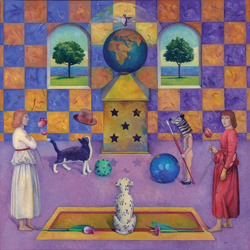
“Simple Mysteries” by Gail Marcus-Orlen shows at Louis Carlos Bernal Gallery through March as part of the exhibit “Magical Realism.”
LOUIS CARLOS BERNAL GALLERY Magical Realism, featuring artwork by Gail Marcus-Orlen, Robert Cocke, Penny McElroy and Janet Prip, continues through March. Opening reception Thu, Feb 13; 5pm-7pm. Construct: Putting It Together continues through Wed, Jan 29. Mon-Thu; 10am-5pm. Fri; 10am-3pm. 2202 W. Anklam Rd. 206-6942, Pima.Edu/cfa
MOROCCAN TEXTILES & COSTUMES Displayed throughout February. The Arabian Oasis Cultural Center, 2102 E. Broadway Blvd. Mon-Fri, 10am-4pm. 624-1699, TheArabianOasis.org
MUSEUM OF CONTEMPORARY ART Alois Kronschlaeger: Untitled (Basin and Range) continues through March. Dave Sayre: How to Kill a Marvin Gaye Song shows through Jan. 26. Wed-Sun, noon-5pm. $8, adults; free, children under 12, members, military; free to all last Sunday of the month. 265 S. Church Ave. 624-5019, MOCA-Tucson.org
OBSIDIAN GALLERY “Natural Influences” featuring ceramic sculpture by Tom Kerrigan and Jose Sierra and fiber art and paintings by Jane Herrick. Shows through March 2, with the Artists’ reception on Saturday, Feb 1, 6pm-9pm. Wed-Sat; 11am-6pm. Obsidian Gallery, 410 N. Toole Ave. 577-3598, Obsidian-Gallery.com
PHILABAUM GLASS GALLERY & STUDIO Earth, Wind, & Fire opens Sat, Feb 1 with a reception from 5pm-8pm, shows through April. Tue-Sat;10am-5pm. 711 S. 6th Ave. 884-7404, PhilabaumGlass.com
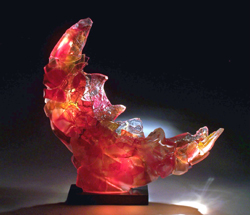
“Red Brimstone” by Caleb Nichols features as part of the exhibit “Earth, Wind, & Fire” at Philabaum Glass Gallery and Studio.
PORTER HALL GALLERY Treasures of the Amerind continues through Mon, Feb 17. Paintings by Beata Wehr open Thu, Feb 20 with a reception from 5pm-7pm. Daily; 8:30am-4:30pm. $13, Adults; $12, student/senior/military, $7.50, children 4-12; free, children 3 and younger. 2150 N. Alvernon Way. 326-9686, TucsonBotanical.org
RAICES TALLER 222 ART GALLERY AND WORKSHOP Carnaval opens Sat, Feb 1 with a reception from 6pm-9pm. Fri-Sat, 1pm-5pm & by appointment. 218 E. 6th St. 881-5335, RaicesTaller222.webs.com
SACRED MACHINE See website for information. Wed-Fri, 5pm-8pm; Sat, 4pm-9pm. 245 E. Congress St. 777-7403, SacredMachine.com
SOUTHERN ARIZONA WATERCOLOR GUILD 46th Annual Show Lightness and Shadow opens Tue, Feb 11. Tue-Sun; 11am-4pm. Free. SAWG Gallery, 5605 E. River Rd. 299-7294, SouthernAzWatercolorGuild.com
THE GALLERIA AT THE YW Featuring a joint exhibit of Western photography by Mia Larocque and Louise L. Serpa. Opens with a reception on Feb. 6, 6pm-8pm. Free. Monday-Friday, 9am-5pm. 525 N. Bonita Ave. 884-7810, YWCATucson.org
TUCSON MUSEUM OF ART A Show of Hands continues through Sun, Feb 9. Bob Kuhn: Drawing on Instinct continues through Sun, Feb 16. Rose Cabat at 100: A Retrospective Exhibition of Ceramics opens Sun, Feb 1. The Circle Game opens Sat, Feb 22. Trails to Rails: John Mix Stanley and the Pacific Railroad Survey of the 185. Tue,Wed, Fri, Sat; 10am-5pm; Thu: 10am-8pm; Sun, 12pm-5pm. $10, adults; $8, seniors; $5, students 13+; free, children under 12. Free to all the first Sunday of the month. 140 N. Main Ave. 624-2333, TucsonMuseumofArt.org
WEE GALLERY Shana Zimmerman Show takes place Sat, Feb 1-Thu, Feb 27. Thu-Sat; 11am-6pm. 439 N. 6th Ave Suite #171. 360-6024, GalleryWee.com

“La Placita Detail'” by Shana Zimmerman shows as part of her exhibit “Personal Space” at Wee Gallery.
WILDE MEYER GALLERY The Gem Show and The Wilde West open Thu, Feb 6. Native Spirits North and South opens Thu, Feb 27. Mon-Fri, 10am-5:30pm. Wilde Meyer Gallery, 3001 E. Skyline Dr. WildeMeyer.com
WOMANKRAFT ART GALLERY Fiber, Paper, Metal, Glass opens Sat, Feb 1 with a reception from 7pm-10pm. Wed-Sat; 1pm-5pm. 388 S. Stone Ave. 629-9976, WomanKraft.org
YIKES TOYS AND GIFT-O-RAMA Light Hearted Valentine Show by Sharon Holnback opens Mon, Feb 3. Reception Sat, Feb 8; 6pm-8pm. Mon- Sat; 10am-5:30pm. Yikes Toys and Gift O-Rama, 2930 E. Broadway Blvd. 320-5669, YikesToys.com
YOU AND YOUR BIG IDEAS GALLERY We Are All Containers by Bryan Crow shows Sat, Feb 1- Sun, Feb 23. 6pm-9pm. 174 E. Toole Ave. 629-9230, Facebook.com/YouAndYourBigIdeas



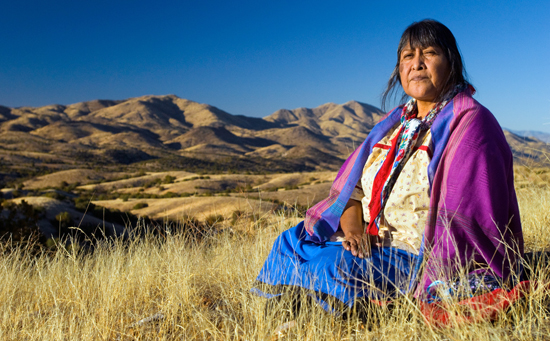
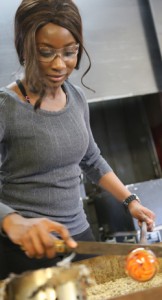
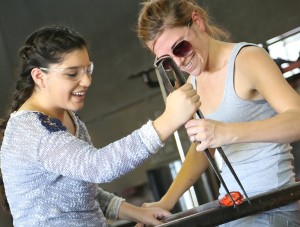


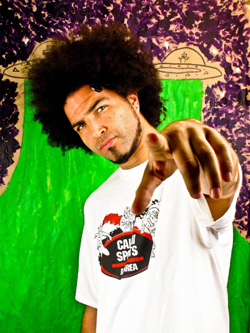

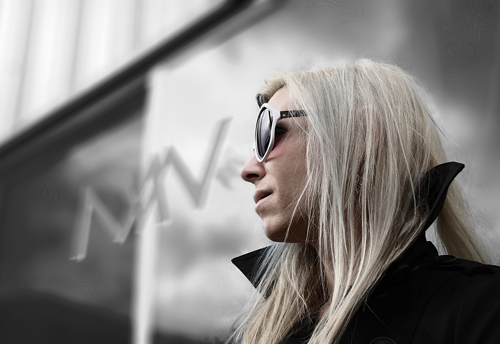
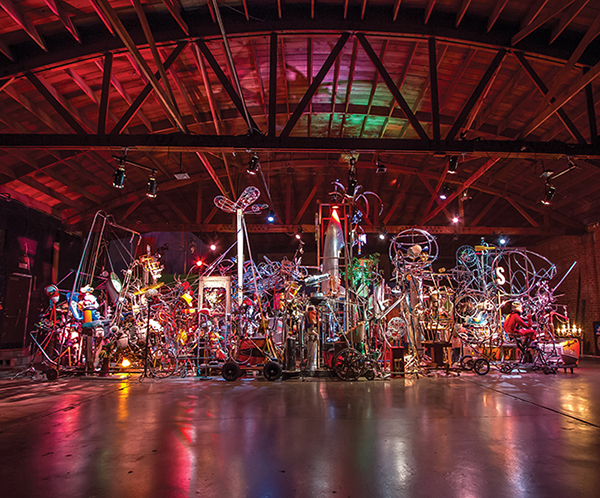
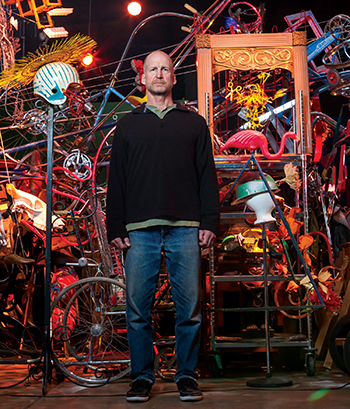
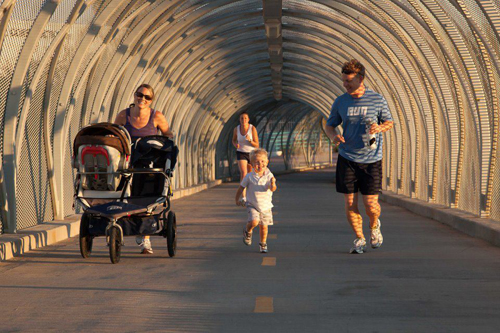
 For the competitive, there’s the Colossal Du, a rugged run-bike-run in Colossal Cave Mountain Park, 16721 E. Old Spanish Trail. The park will throw its own festivities, with free Discovery Tours and an archaeology hike of Hohokam sites. Across town, a 5-mile social run will show off the scenery at Saguaro National Park West, 2700 N. Kinney Rd.
For the competitive, there’s the Colossal Du, a rugged run-bike-run in Colossal Cave Mountain Park, 16721 E. Old Spanish Trail. The park will throw its own festivities, with free Discovery Tours and an archaeology hike of Hohokam sites. Across town, a 5-mile social run will show off the scenery at Saguaro National Park West, 2700 N. Kinney Rd.



Also find us on...